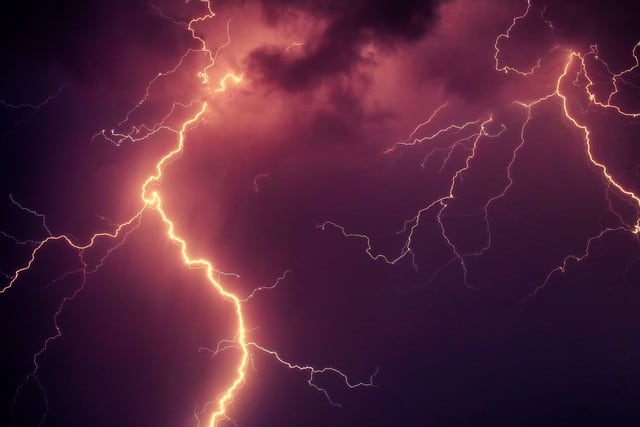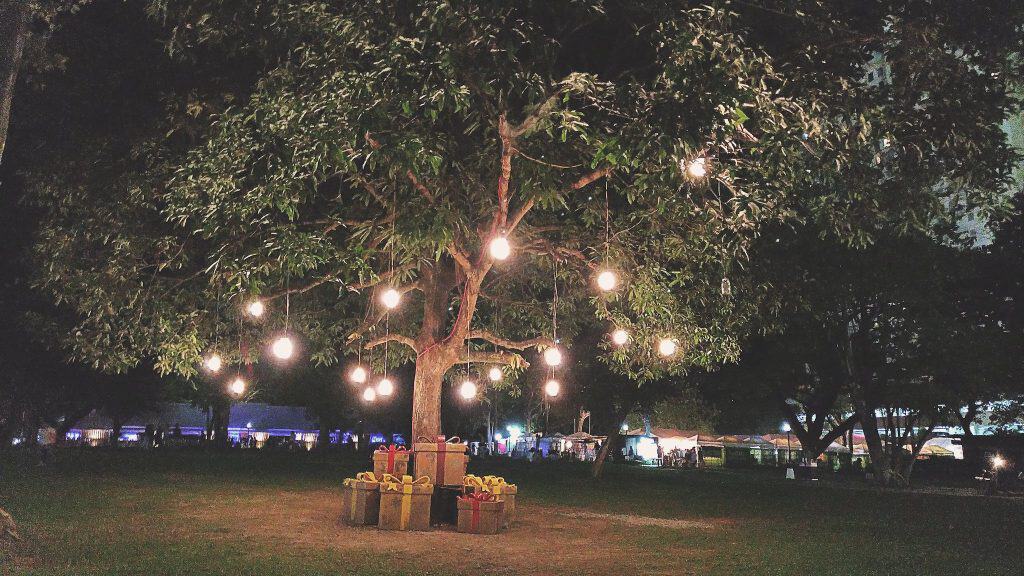Have you experienced the uneasy feeling when you come home to a darkened doorway or yard? Outdoor security lights can go a long way to calming that feeling. Beyond just lighting up the dark corners, they add an extra layer of safety home security lights, and peace of mind to your home.
Different Types of Outdoor Security Lights
- Motion-sensor lights: Kick on when they detect movement. Ideal for entrances and specific areas.
Solar-powered lights: No wiring is needed, they charge during the day and shine at night.
Floodlights: Illuminate larger areas with their bright, wide-reaching beams.
Decorative security lights: Combine safety with aesthetic appeal, great for pathways and patios.

Floodlights and Motion Lights for Increased Safety
Floodlights and motion lights are essential tools for outdoor security. Floodlights provide a broad and intense light, ideal for lighting up vast outdoor spaces, like driveways or large yards. In contrast, motion lights activate only when they detect movement, making them energy-efficient and great for highlighting specific areas like entrances. When combined, they offer a comprehensive lighting solution that enhances safety while also being cost-effective.
Wall Pack Lights
Wall pack lights are durable fixtures commonly mounted on building exteriors. They evenly distribute light downwards, covering large areas without glare. Built for outdoor conditions, they are ideal for security and lighting up broad spaces, like parking lots or pathways.

Best Light Bulb for Security Light Fixtures
For security light fixtures, LED light bulbs are the way to go. They’re energy-efficient, long-lasting, and offer instant, bright light. Choose bulbs around 5000K for a clear, white light that enhances visibility, making spaces safer.
Bulb Types
Security and floodlights used in homes are usually incandescent or LED lights. Compared to LED lighting in an incandescent room they typically require less electricity to produce the same light output, so these lamps can help save money. LED lighting has a longer life, so replacing it often is less expensive. And LED lighting produces directional light, which makes floodlights crucial. Incandescent light’s brightness can be expressed by wattage. When lighting LEDs their luminosities are measured in lumens. Higher values mean higher illumination.

Power Sources for Outdoor Security Lights
Powering outdoor solar panels and security lights boils down to three main options:
Wired: Directly connected to the home’s electrical system; offers consistent power but may need professional installation.
Battery-powered: No wires, giving flexibility in placement. Requires periodic battery replacements.
Solar: Uses sunlight to charge and power lights at night. They’re eco-friendly, but their efficiency depends on daily sun exposure.
Emergency Light Options
These lights are lifesavers during power outages. You’ll most commonly find two types: wall-mounted units that kick on when the power cuts and portable battery-powered lights, like lanterns or flashlights. Many wall-mounted ones come with backup batteries to ensure they run even during prolonged blackouts. Meanwhile, the portable options are essential for navigating in the dark or signaling for help.

Landscape Lights
Landscape lights on pathways light up ensuring safe walking. Spotlights highlight specific outdoor areas, from trees to water features. Deck and patio lights enhance visibility in outdoor gathering areas. When selecting exterior lights, consider LED options: they’re energy-efficient, offer consistent brightness, and have a long lifespan.
Security Light Features
When considering security light features, focus on these special features:
Brightness: Measured in lumens; higher values indicate brighter lights.
Detection Range: The distance from which the light can detect movement.
Field of View: Some sensors cover up to 180°, capturing more area.
Power Source: Options include wired, solar, or battery-operated.
Adjustable Settings: Control the duration the light remains on after motion is detected.
Dusk-to-Dawn: This feature ensures lights activate only during low-light conditions, conserving energy.
Types of Lights and Light Sensors
Floodlights outside are the most widely used security lights for houses. Floodlights provide light that can beam out over large spaces. There are flood lamps with varying illumination levels and fixtures that have 1-2 light heads for the required illumination. Switched floodlights are the most affordable and simplest floodlights available. You may switch the lights on and turn lights off if you need to, stay on throughout the night to make it safer for guests, and use these to make it less attractive to thieves. The setup can just be done by focusing the ear on your target light source.
Best Flood Light
Our favorite flood protection light is the 45W LED Floodlight. Designed to light entryways and exterior walls it produces 6,750 lumens of bright and white light. We like the bypassable photocell which can operate in daylight and in standard On / Off modes as well. With the L70’s lifespan of 75,000 hours, you can have confidence the floodlight provides the necessary lighting protection for years to come. This light can be used to illuminate large areas such as entryways or patios in the house or inside. Specifications.
Dusk to Dawn Lights
This light provides more security for businesses to provide light during the evening. There are various mounting options and style options to suit you. Uses: Parks, garages, warehouse parking areas, stalls, stores, store-grower, alleyways, construction zones, lots.
LED Canopy Lights
A versatile outdoor security light and lighting system that is suitable for use on the outdoors. canopy illumination is available in different sizes and lumen types. This light product is a strong option suited for tough climate conditions. Easy upgrades to HID or HMH fixtures. Use: Bus depot, gas station, garage, automotive showroom, porch carport.
Can you add a motion sensor to an outdoor light?
You can indeed retrofit an existing outdoor light with a motion sensor. Standalone motion sensors are available for purchase and can be wired directly into your current light fixtures. These add-on sensors typically offer adjustable settings, allowing you to modify the detection range and the duration the light stays on after motion is detected.
When integrating a front motion sensor light in, it’s essential to ensure that it’s compatible with your light fixture’s voltage and power requirements. If you’re not experienced with electrical tasks, enlisting a professional for the installation is advisable to ensure safety and proper functionality.
Automatic Sensors and Motion Sensor Security Lighting
Motion sensor lights are equipped with Passive Infrared Sensors (PIR) or microwave sensors to detect rapid changes in heat or movement, respectively. PIR sensors are more common, sensing the heat emitted by people and animals. Their detection range varies, but they typically cover a 120° to 180° field of view and can detect movement up to 20-50 feet away.
Dusk-to-dawn sensors, also known as photocells, respond to light levels. They activate the light as ambient light diminishes in the evening and deactivate it when it brightens in the morning. This ensures consistent lighting during the night without manual intervention.
When choosing a security light, it’s essential to understand these sensor specs. The installation height, angle adjustment, and possible obstructions to direct light can all influence detection accuracy. For larger areas, opting for a light with a broader detection range is key, while smaller spaces might benefit from adjustable sensitivity settings to avoid false triggers.
How to Choose Outdoor Motion Sensor Lights
First, consider the detection range – some sensors can pick up movement from as far as 50 feet away, while others have a more limited scope. Think about the size of the area you’re covering. Next up, check the sensor light field of view. A wider angle, like 180°, will catch movement from side to side. For power, do you want wired, battery-operated, or solar? Wired is reliable but may need professional installation, while solar is eco-friendly but relies on daily sun. Also, don’t forget about brightness. Lumens indicate how bright the light is; for security purposes, you might want something brighter. Lastly, consider features like adjustable timing (how long the light stays on) and a dusk-to-dawn setting for added convenience.
What are other ways to add security lighting to my home?
For added security lighting:
String Lights: While decorative, they provide ambient illumination.
Pathway Lighting: Stake lights illuminate walkways, highlighting potential trip hazards.
Timers: Set indoor lamps to switch on and off, giving the appearance of an occupied home.
Solar-Powered Stake Lights: Efficient options for gardens, adding low-level lighting.
By mixing these light sources, you can effectively enhance security without overwhelming brightness.
Excellent LED Outdoor Security Lighting
When selecting LED outdoor security lighting, focus on:
Brightness: Look for lumens between 700 to 1500 for clear visibility.
Color Temperature: Opt for around 5000K for bright, white light.
Lifespan: Premium LED bulbs should last up to 50,000 hours.
Energy Efficiency: LEDs use significantly less power, reducing electricity costs.
Weather Resistance: Ensure the fixture can withstand external elements, especially in exposed locations.
Conclusion
Lighting up the exterior of your home isn’t just about aesthetics—it’s a solid security move too. From understanding motion sensors to the power sources behind those bright beams, I’ve unpacked various security light features, from lumens to power sources, and even explored out-of-the-box lighting options like string lights and timers. The goal? Create a well-lit, secure space without making your yard look like a scene out of a sci-fi movie. Remember, it’s all about blending functionality with subtlety.
How do I choose an LED Wall Pack?
Commercial LED wall lights can provide additional brightness for various areas. These security lighting options are installed above doors or on a wall to provide enough illumination in a more challenging area. Best Use: Building – Perimeter lighting, Parking Garages, Apartment Building Walkways.
How many lumens should I use for outdoor security lights?
In outdoor lighting, the amount of lumen needed is dependent on how many square feet and the purpose of the outdoor lights that you need. For maximum effect, the security light needs 750-1000 lumens. In order to illuminate a larger area with a brighter light a lighter light will probably be needed for the task. The lamp’s output is higher than a normal lamp. In addition, keep in mind local laws/lighting regulations which will dictate how long the light can last outdoors in your location.
Are flood lights good for security?
Floodlighting is a good alternative when it comes to home security lighting. Flood lighting is designed for large, intense beams of illumination across large regions. They will help to stop potential attackers from revealing their presence and preventing them from hiding from the public. The lights will also give homeowners more visibility into suspicious activity at a home. Several floodlights include both motion detection and sensors, which add to safety. Flood light alone cannot guarantee full home security.